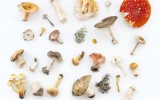What Type of Farming Is the Most Profitable?
In 2020, the global agricultural market was valued at approximately $9.58 trillion, underscoring the vast economic scale and diversity of the sector. The profitability of different types of farming depends on factors such as crop value, input costs, and technological advancements. In this article, we'll explore various farming practices and identify which type is the most profitable.
Microgreens farming is identified as the most profitable type of farming, with estimated profits ranging from $200,000 to $400,000 per acre. This is attributed to its quick growth cycle, high turnover rate, and strong market demand for healthy greens, as well as its low space requirement and scalability.
While microgreens farming stands out for its high profitability, ventures like mushroom farming, aquaculture, and beekeeping also offer substantial income potential. Let's explore the profitability of these farming methods and find out which varieties can maximize profit further.
Summary
- Unique mushroom varieties such as Shiitake, Oyster, and Morel offer a profitable niche in agriculture with estimated profit margins between 25-50%, driven by culinary and health trends.
- Organic vegetable farming can yield profit margins of 20-30% due to growing market demand for products free from synthetic pesticides and fertilizers, despite higher initial investments and labor costs.
- Fish farming presents a profitable venture with estimated profit margins of 15-25%, catering to the high market demand for sustainable seafood, including species like Salmon, Tilapia, and Catfish.
- Lavender farming and beekeeping are identified as high-return ventures with profit margins ranging from 25-40% and 30-40%, respectively, driven by market demand for natural products and services.
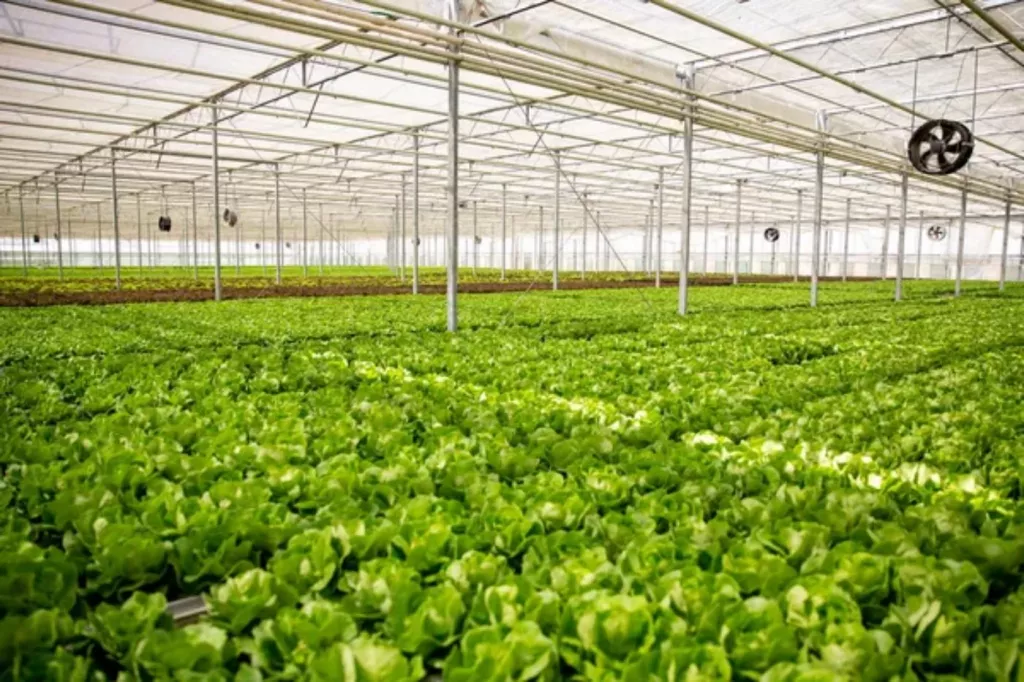
On this page:
- Which Farming Is Most Profitable?
- Microgreen Farming Gives High-Profit Margin Return
- Cultivating Unique Mushroom Varieties is a Profitable Niche
- Organic Vegetable Farming is a Profitable Market
- Fish Farming is a Profitable Venture
- Lavender Farming Has a High-Profit Return
- Beekeeping Is a Sustainable Way To Earn More Profit
- What Type of Small Farm Is the Most Profitable?
- Most Profitable Farming Per Acre
Which Farming Is Most Profitable?
| Farming Type | Initial Investment | Market Demand | Estimated Profit Margin |
|---|---|---|---|
| Microgreens | Low | High | 20-40% |
| Specialty Mushroom | Moderate | Increasing | 25-50% |
| Organic Vegetable | High | High | 20-30% |
| Aquaculture | High | High | 15-25% |
| Lavender | Moderate | Growing | 25-40% |
| Beekeeping | Low to Moderate | High | 30-40% |
Microgreen Farming Gives High-Profit Margin Return
Microgreens, the young vegetables or herbs harvested just after their first leaves have developed, are celebrated for their nutritional value and flavor, making them a favorite among chefs and health enthusiasts alike.
Starting a microgreens operation requires a relatively low initial investment and can be undertaken even in small spaces.
The demand for these greens is particularly high, especially in urban locales and among restaurants, offering an enticing market opportunity.

After covering initial setup costs, the venture can expect an estimated profit margin of 20-40%, presenting an attractive proposition for those looking to enter this niche agricultural sector.
Analyzing the profitability of microgreen farming
- The profit per tray ranges from $8.5 to $26, depending on the yield (8-12 oz per tray) and the selling price ($25 - $40 per pound).
- For each rack, which can hold 20 trays, the profit from a single planting can range from $170 to $520.
- Projecting this over a year, with a continuous growing cycle each week, the annual profit for operating just one rack of microgreens could be between $8,840 and $27,040.
This shows that microgreen farming can indeed be a lucrative venture, especially considering the quick turnaround time for crops and the relatively low space requirements. It is indeed one of the most profitable types of vegetable farming.
Top microgreen varieties for profit
| Microgreen Variety | Profitability Estimates |
|---|---|
| Pea shoots | High yield and low cost often result in good profit margins. |
| Radish microgreens | Can be very profitable due to high demand and quick crop turnover. |
| Sunflower microgreens | Profitable due to their substantial addition to dishes and popularity. |
| Broccoli microgreens | Valued for health benefits, which can command higher prices |
| Arugula microgreens | Desirable for gourmet markets, potentially higher price point |
| Mustard greens | Attractive for their unique flavor, which can lead to profitable niche markets |
-
Pea shoots: Known for their sweet flavor, pea shoots are popular in salads and as garnishes. They grow quickly and are relatively easy to cultivate.
-
Radish microgreens: Radish microgreens are sought after for their spicy flavor and vibrant colors. They have a quick turnaround time from seeding to harvest.
-
Sunflower microgreens: These have a nutty flavor and are popular in sandwiches and salads. Sunflower microgreens are larger, making them a substantial addition to dishes.
-
Broccoli microgreens: Highly valued for their health benefits, including high levels of sulforaphane, broccoli microgreens are in demand by health-conscious consumers.
-
Arugula microgreens: With a peppery taste similar to adult arugula, these microgreens are a favorite in gourmet dishes and salads.
-
Mustard greens: Offering a spicy kick, mustard greens microgreens are popular for adding flavor to a variety of dishes.
Cultivating Unique Mushroom Varieties is a Profitable Niche
Cultivating unique mushroom varieties such as Shiitake, Oyster, and Morel in a controlled environment presents a profitable niche, with a moderate initial investment required to create the necessary conditions for growth.
These mushrooms are gaining popularity in the market due to their culinary applications and health benefits, leading to an increase in demand, especially for organic and specialty varieties.
Depending on the variety and market conditions, the estimated profit margin for growing these mushrooms ranges between 25-50%.
Profit potential of mushroom farming
Mushroom farming can be profitable with proper management.
- A small-scale mushroom farm with initial costs of around $15,900 and producing 12,000 pounds of mushrooms yearly could see a profit margin of 24% at a market price of $1.74 per pound. This setup leads to a profit of $4,980 annually.
You can see more profit calculations for different kinds of mushroom farms in this article.
Most profitable mushroom types
| Mushroom Type | Profit Potential |
|---|---|
| Oyster mushrooms | High profitability due to ease of growth and minimal market competition |
| Shiitake mushrooms | High yield potential and moderate commercial prices |
| Lion's mane mushrooms | Profitable and easy-to-grow for small-scale production |
| Reishi mushrooms | Considered profitable for consistent growers |
| Morel mushrooms | High market value due to their rarity and demand |
- Oyster mushrooms: Oyster mushrooms are popular for their mild flavor and versatility in cooking. They are one of the easiest mushrooms to grow, requiring minimal investment in terms of space and equipment. Their fast growth cycle allows for quick turnover, making them a favorite among small-scale and beginner mushroom farmers.

-
Shiitake mushrooms: Shiitake mushrooms are prized for their rich, savory taste and numerous health benefits. They have a higher market price compared to oyster mushrooms, primarily due to their longer cultivation period and more specific growing conditions. However, their popularity in both fresh and dried forms makes them highly profitable.
-
Lion's mane: Known for its unique appearance and potential cognitive benefits, lion's mane mushrooms have seen a surge in popularity, especially in the health and wellness industry. They can be grown on a variety of substrates and have a relatively short cultivation cycle. Here's how you can grow them successfully.
-
Reishi mushrooms: Often grown for medicinal purposes, reishi mushrooms are valued for their potential to boost the immune system and reduce stress. While they take longer to grow and are not commonly consumed as food due to their bitter taste, reishi can command high prices, especially in processed forms like powders and supplements.
-
Morels: Wild morels are highly sought after for their distinct flavor and are considered a delicacy. Cultivating morels can be more challenging than other varieties, but due to their high market price, they can be extremely profitable. Learn more about the profitability of these mushrooms in this article.
Organic Vegetable Farming is a Profitable Market
Organic vegetable farming, which forbids synthetic pesticides and fertilizers, necessitates a significant initial investment primarily due to the larger land areas required and the costs associated with obtaining organic certification.
Despite the increased labor demands, this sector benefits from a high and escalating market demand, particularly in developed markets.
As a result, the estimated profit margin ranges between 20-30%, varying based on the selection of crops and operational efficiencies, making organic vegetable farming a profitable market.
Assessing the profitability of organic vegetable farming
-
The global market for organic vegetable farming is growing steadily, with a projected compound annual growth rate (CAGR) of 4.9% from 2022 to 2027, indicating a strong and increasing demand for organic vegetables. This demand is driven by consumers' growing preference for organic produce due to its health benefits and environmental sustainability.
-
If your farm produces 10,000 pounds of vegetables per acre with market prices ranging from $1.50 to $2.50 per pound, the estimated annual revenue from the 10 acres dedicated to vegetables could be between $150,000 to $250,000.
Most profitable organic vegetables
The most profitable organic vegetables tend to be those that can be grown in high density, have short growing cycles, and demand higher prices due to their popularity and organic status.
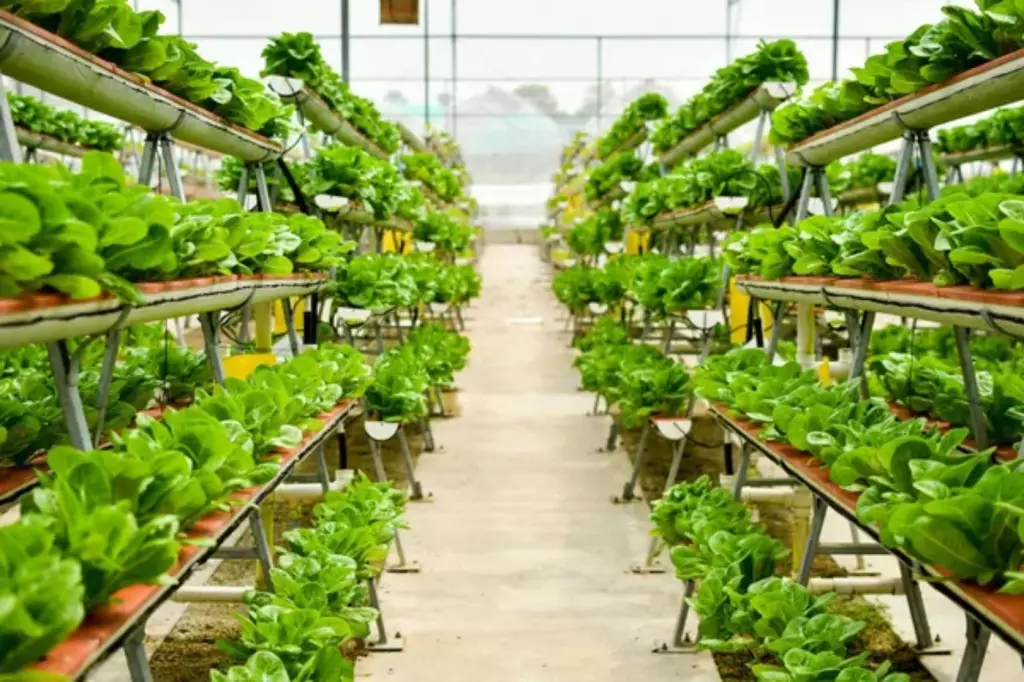
-
Baby salad greens: Similar to microgreens, baby salad greens can be harvested early and continuously, offering high yields from a small space. They are popular for their tender texture and flavor.
-
Herbs: Organic herbs like basil, cilantro, chervil, and mint command high prices and can be grown in small spaces, including indoors. They are in constant demand by both home cooks and restaurants. Basil is one of the most profitable crops for small farms in the UK.
-
Tomatoes: Organic tomatoes, especially heirloom varieties, can fetch high prices. They are widely used and appreciated for their flavor, making them a staple in many gardens and farms.
-
Garlic: Organic garlic is profitable due to its long storage life and high demand. It can also be sold as garlic scapes (the flower stalks) in early summer before the bulbs are ready.
-
Ginger and turmeric: These are high-value crops known for their medicinal properties. They require specific growing conditions but can yield a significant return on investment due to their health benefits and use in various cuisines.
-
Specialty hot peppers: Varieties such as habaneros, ghost peppers, and other exotic types can be very profitable, especially if sold directly to consumers or small businesses looking for unique ingredients.
-
Leafy greens: Kale, spinach, and Swiss chard are in demand for their health benefits and versatility in cooking. Organic versions of these vegetables can command higher prices.
-
Root vegetables: Carrots, beets, and radishes, especially unique or heirloom varieties, can be profitable when grown organically. They are appreciated for their flavor and nutritional content.
Fish Farming is a Profitable Venture
Fish farming, particularly for species like Salmon, Tilapia, and Catfish. The method can vary from intensive tank systems to pond culture.
- Initial investment: High, particularly for closed systems.
- Market demand: High, with an increasing trend towards sustainable fish farming.
- Estimated profit margin: 15-25%, depending on scale and species.
Profit projections of fish farming
-
A small fish farm could potentially sell 2,000 pounds of fish monthly, leading to approximately $168,000 in annual revenue.
-
The global fish farming market was valued at USD 320.67 billion in 2022 and is expected to grow at a compound annual growth rate (CAGR) of 4.9% from 2023 to 2032.
-
The fish farming market is expected to reach USD 471.7 billion by 2030, emphasizing its potential for profitability in the coming years. This projected growth, along with the increasing global demand for fish, suggests that fish farming can be a profitable endeavor if managed effectively and sustainably.
Profitable fish species
| Fish Species | Estimated Profit Potential |
|---|---|
| Cod | High, due to market demand for consumption |
| Catfish | Popular in the US, profitable especially in small-scale operations |
| Tilapia | Known for being a profitable species, especially in earthen ponds with semi-intensive management |
| Eel | Profitable due to market demand, particularly in Asia |
| Ornamental Fish | Profitable in the niche market of aquarium enthusiasts |
| Prawn | High profitability due to demand for seafood |
| Tuna | High market value, profitable for those who can meet the operational challenges |
| Salmon | High demand, especially for certain species like Atlantic salmon |
-
Cod: Cod is a staple in many diets around the world, known for its mild flavor and versatile culinary uses. The profitability of cod farming hinges on efficient management practices and the ability to meet market demand while ensuring sustainable fishing practices.
-
Catfish: Its popularity stems from its mild taste, adaptability to various aquaculture systems, and relatively low cost of production. Catfish can thrive in a range of environments and are resistant to many common fish diseases, reducing the need for expensive treatments.
-
Tilapia: Tilapia is hardy and can tolerate a wide range of water quality conditions, making it an ideal candidate for less intensive farming practices. Its rapid growth rate and high reproduction rate contribute to its profitability.
-
Eel: Farming eels is complex and requires specific knowledge and skills, including managing their unique lifecycle. However, the high market prices for eel, especially for species like the Japanese eel, make it a lucrative venture.
-
Ornamental fish: This niche market caters to aquarium enthusiasts who are willing to pay premium prices for unique and exotic fish. The profitability of ornamental fish farming lies in the high value placed on rare and aesthetically appealing species, making it a lucrative, albeit specialized, area of aquaculture.
-
Prawn: The ability to farm prawns in various environments, from freshwater to brackish water systems, alongside their fast growth rate, contributes to their profitability.
-
Tuna: With high market value, tuna farming can be profitable for operations that can meet the significant operational challenges involved, including large-scale open-water farming and the need for sustainable management practices to address overfishing concerns.
-
Salmon: Salmon farming has become highly sophisticated, with significant advancements in feed efficiency, disease control, and breeding practices. Despite the operational challenges, such as managing the impact on local ecosystems, the high market demand for salmon makes it a highly profitable venture.
A more detailed outlook on the profitability of these fish species can be found in this article.
Lavender Farming Has a High-Profit Return
Lavender can be used in a wide range of products from essential oils to culinary herbs.
- Initial investment: Moderate, requires land and initial plants.
- Market demand: Growing, especially for organic and high-quality sources.
- Estimated profit margin: 25-40%, heavily dependent on value-added products.
Profitability studies on lavender farming
-
A study on lavender farms in the Isparta province of Turkey found that the gross profit from lavender farming was calculated as $1,695.08 per hectare, and the net profit was $1, 018.37 per hectare.
-
An acre of English lavender can produce between 300 and 1,800 pounds of dried flowers or about 2 gallons of essential oil, which can be a significant source of revenue if the market conditions are favorable. One of the most profitable products in UK small farms is lavender - being cultivated primarily for its essential oils.
Those interested in lavender farming need to consider these variables and conduct a thorough market analysis and financial planning to ensure the profitability of their venture.
Beekeeping Is a Sustainable Way To Earn More Profit
Beekeeping for honey production and pollination services for other farms. It has a low environmental impact and supports the ecosystem.
- Initial Investment: Low to moderate, requires hives and bees.
- Market Demand: High for local, raw honey and bee-related products.
- Estimated Profit Margin: 30-40%, depending on production method and product quality.
Earnings from bee farming and products
- A bee colony can produce roughly 60-85 pounds of honey per year, with the average farmer grossing $460 per colony per year.
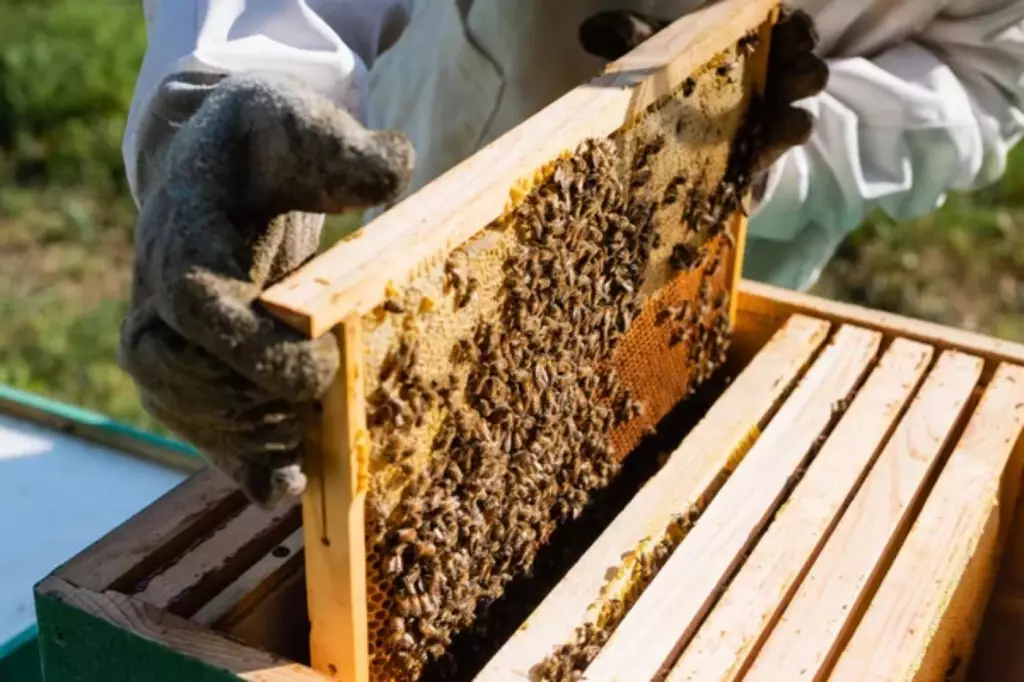
-
A healthy bee hive in a good region can yield a profit of $300-$500 per hive each year, but this can fluctuate based on factors like climate, bee diseases, and changes in demand for honey and other bee products.
-
Revenue streams from bee farming include the sale of bees, honey, bee pollination services, bee products like beeswax, pollen, propolis, and royal jelly, as well as workshops and tours. Earnings can range from $150–$200 for nucs, $25–$40 for queen bees, $8–$15 per pound of honey retail, and various other prices for bee products and services.
To learn more about the profitability of bee farming, check out this article.
What Type of Small Farm Is the Most Profitable?
Small-scale farming can yield surprisingly high profits per square foot, particularly if you intend to maximize the use of your space.
Adjusting the table to include estimated profit potential for poultry farming specifically, and adding estimated amounts for specialty crop farming with an example crop, let's say strawberries, for a clearer comparison. These estimates are generalized and can vary significantly based on factors like location, scale of operation, market demand, and efficiency of farm management.
| Type of Farming | Estimated Profit Potential per Acre | Key Factors Affecting Profitability |
|---|---|---|
| Microgreens farming | $200,000 - $400,000 | Quick growth cycle, high turnover, market demand for healthy greens |
| Poultry farming | $10,000 - $30,000 | Efficient practices, good animal care, market demand for eggs/meat, scale of operation |
| Specialty crop farming (e.g., Strawberries) | $20,000 - $40,000 | Type of crop, local climate, market demand, strategic crop management, and marketing |
-
Microgreens farming offers a lucrative avenue, since these young plants grow quickly and have a high turnover. The startup costs for microgreens might range from $2,000 to $7,000, but with a well-managed operation, you might see profits up to $5-$10 per square foot annually.
-
For poultry farming, the profit potential varies depending on the operation's focus (e.g., egg production, meat production), scale, and how well the operation is managed. Efficient space utilization, disease management, and market strategies are crucial for maximizing profitability. Learn more about the profitability of poultry farming, as well as other types of livestock farming in this article.
In terms of crop production, specialty crop farming, including crops like strawberries, can be lucrative due to high demand. Your earnings will hinge on the type of crop, local climate, and market demand, but with the right strategy, small farms can earn significantly from a small plot of land.
Most Profitable Farming Per Acre
| Farming Venture | Estimated Profit per Acre (USD) |
|---|---|
| Specialty crops | $10,000 - $50,000+ |
| Nursery plants and trees | $20,000 - $100,000+ |
| Greenhouse crops | $15,000 - $30,000+ |
| Aquaculture | $10,000 - $50,000+ |
| Beekeeping | $500 - $1,500+ |
| Agroforestry | $1,000 - $10,000+ |
| Saffron farming | $30,000 - $40,000+ |
Cultivating specialty crops
These include organic vegetables, herbs, and heirloom varieties that can fetch higher prices in the market. Products like microgreens, gourmet mushrooms (e.g., shiitake, oyster), and medicinal herbs have relatively low space requirements and can be highly profitable.
Nursing plants and trees
Starting a nursery can be very profitable, especially if you focus on rare or high-demand plants and trees. Bonsai trees, landscaping plants, and fruit tree saplings are examples where small scale can yield significant returns.
Investing in greenhouse crops
Growing crops in greenhouses allows for year-round production, which can significantly increase profitability. Tomatoes, cucumbers, peppers, and leafy greens are popular choices for greenhouse cultivation.
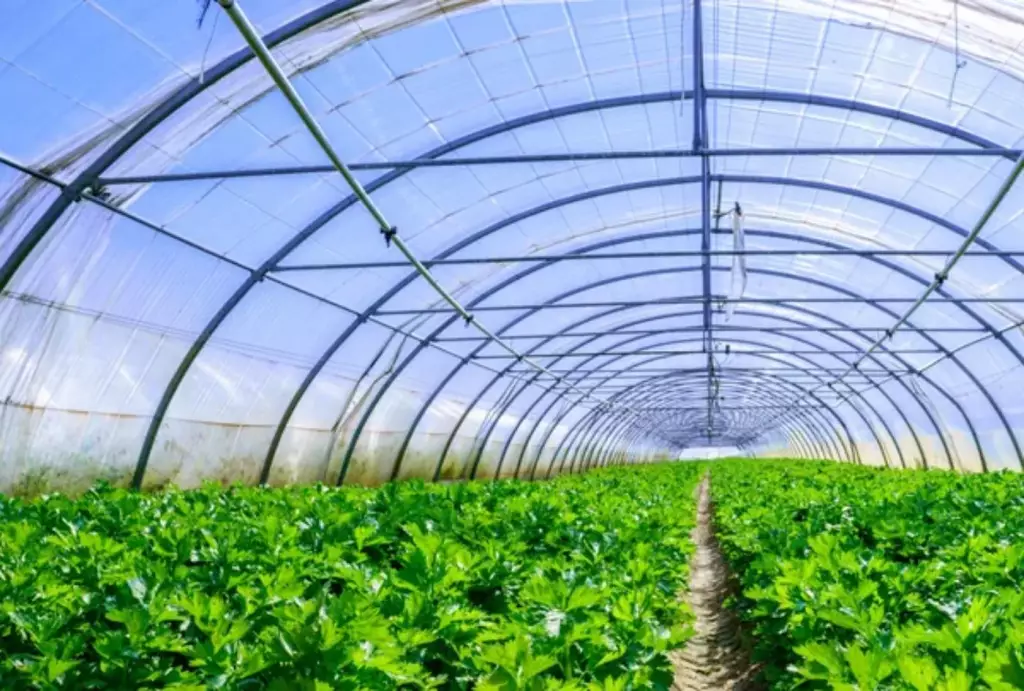
Venturing in aquaculture
Fish farming, especially in integrated systems like aquaponics, which combines fish production with vegetable growing, can be very efficient and profitable.
Exploring beekeeping
Honey and other bee products like wax have a high market value. Beekeeping can be a profitable addition to other farming activities, with the added benefit of improving crop pollination.
Agroforestry and permaculture
Incorporating tree crops with other farming practices can increase biodiversity and long-term income sources from nuts, fruits, and timber without sacrificing space for annual crops or livestock.
Saffron farming
Saffron is one of the most expensive spices in the world, and it requires a small area to grow. However, it's labor-intensive to harvest.


